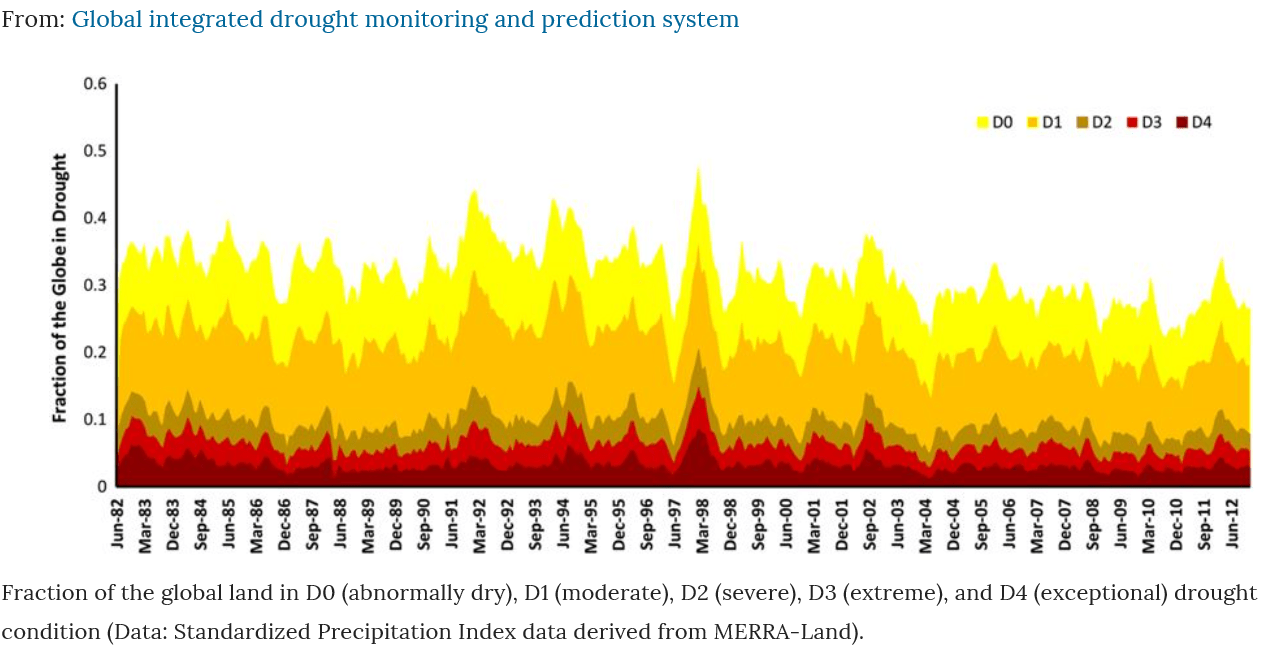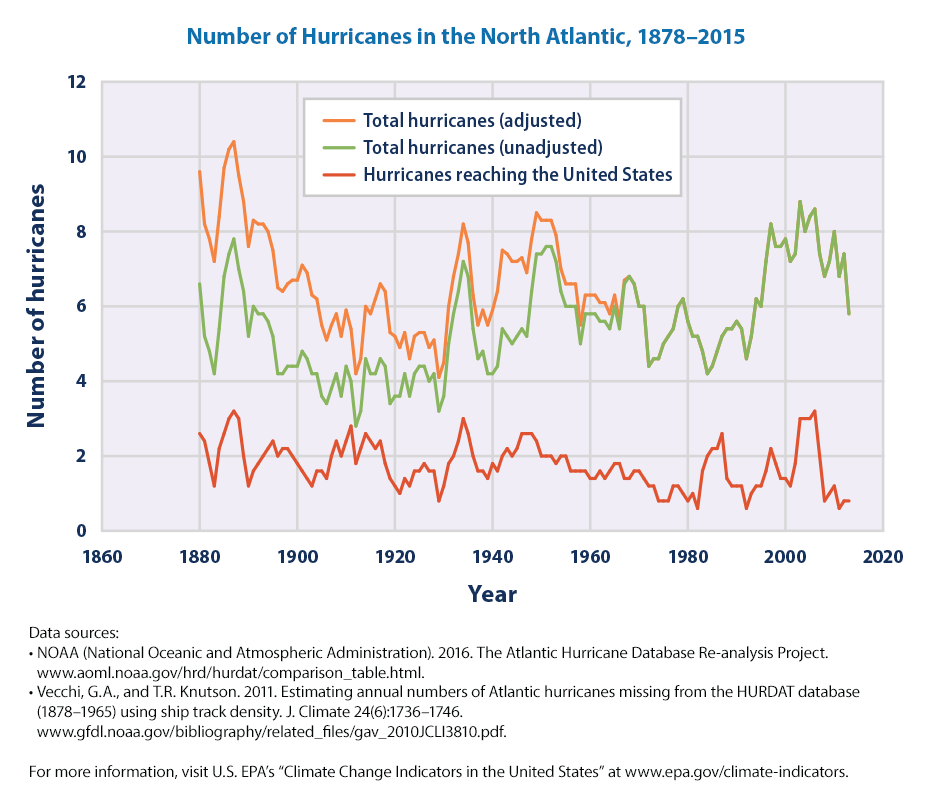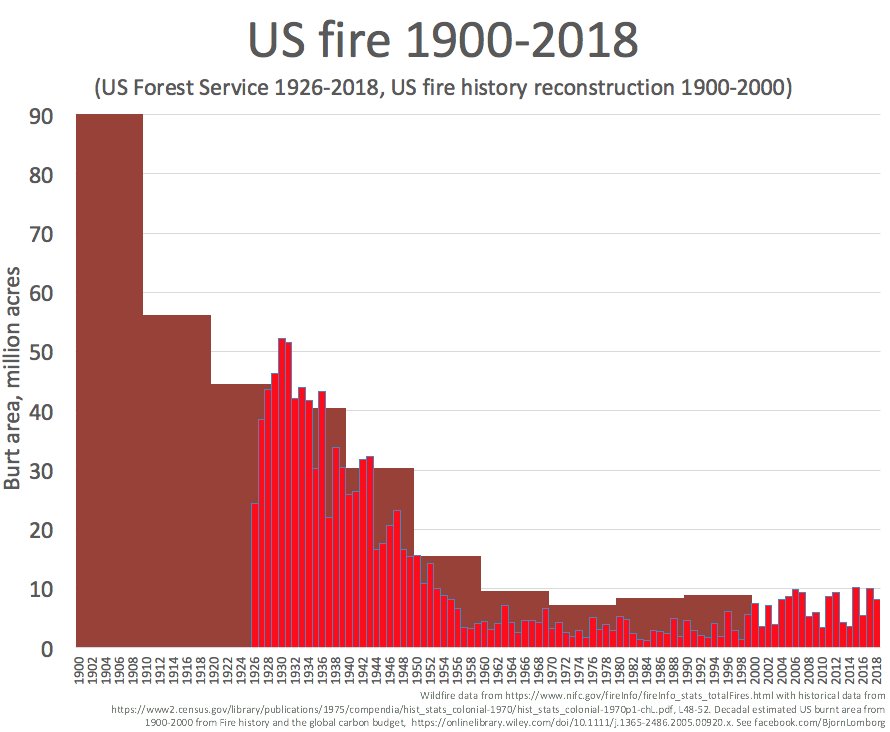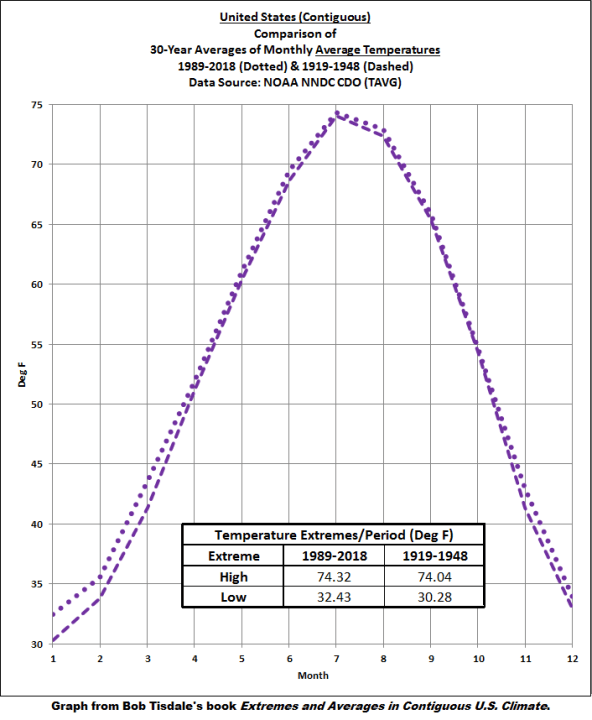The Green New Deal has been proposed.
Co-sponsors Rep. Alexandra Ocasio Cortez (NY) and Sen. Ed Markley (Mass)
Presidential candidates supporting the bill: Sen. Kamala Harris, Sen Corey Booker, Sen Kirsten Gillibrand, Sen Elizabeth Warren and many more to come.
My comments are in italics. This warrants a thorough evaluation
116TH CONGRESS 1ST SESSION H. RES. ll
Recognizing the duty of the Federal Government to create a Green New Deal.
IN THE HOUSE OF REPRESENTATIVES Ms. OCASIO-CORTEZ submitted the following resolution; which was referred to the Committee on
RESOLUTION
Recognizing the duty of the Federal Government to create a Green New Deal. Whereas the October 2018 report entitled ‘‘Special Report on Global Warming of 1.5oC’’ by the Intergovernmental Panel on Climate Change and the November 2018 Fourth National Climate Assessment report found that—
(1) human activity is the dominant cause of observed climate change over the past century;
The IPCC document is more of a political than a scientific document. It presumes that the dominant factor in climate change is the rise in CO2, while the most important greenhouse gas is water vapor and the many forms it takes. It assumes that with rising CO2 the temperature will rise which will evaporate more water and these greenhouse gases would add up to a larger temperature rise than with CO2 rising alone. That would be true unless something else changes. The assumption that they are additive is only true if they are of the same magnitude which is the case in the polar regions in the winter and in the upper atmosphere near the thermopause. In fact there is a strong temperature stabilizer in the ecosystem. It is called clouds. A one percent difference in the average cloud cover has more influence on temperature than the CO2 rise since the beginning of industrialization. At the equator the average temperature stays constant regardless of the CO2 concentration. Where is the proof? It is in the absence of the so called hot-spot in the troposphere:

How well do the models do?

That is why the IPCC assessment is a political, not a scientific document. No true scientist would accept a model if contradicted by physical evidence.
(2) a changing climate is causing sea levels to rise and an increase in wildfires, severe storms, droughts, and other extreme weather events that threaten human life, healthy communities, and critical infrastructure;
The sea level rise has hit a temporary plateau and is not rising at a faster pace than before CO2 started to rise,

as to wildfires, see (3) (C). Droughts are not increasing

tornadoes are decreasing,

so are hurricanes.

Page 2
(3) global warming at or above 2 degrees Celsius beyond pre-industrialized levels will cause—
(A) mass migration from the regions most affected by climate change;
This is a problem in the 10-40 latitude where most people live. Some countries like Mexico and Iran are using up their ground water at an alarming rate, and it will only get worse. But climate change is not the cause of it. Overuse of water is.
(B) more than $500,000,000,000 in lost annual economic output in the United States by the year 2100;
That will only happen if we implement the plan and become a socialist country like Venezuela. 500 billion dollars in an economy of what is now around 20 trillion dollars a year is a lot of money.
(C) wildfires that, by 2050, will annually burn at least twice as much forest area in the western United States than was typically burned by wildfires in the years preceding 2019;

Smokey the bear policies worked well in the 1950’s through 1990 but recent environmental policies hindering cleaning of underbrush are slowly reversing earlier trends.
(D) a loss of more than 99 percent of all coral reefs on Earth;
Temperature is only a minor cause of the coral reef stresses. Overfishing, destructive fishing, water pollution from raw sewage and other dumping is a larger problem.
(E) more than 350,000,000 more people to be exposed globally to deadly heat stress by 2050; and
The tropics has found its temperature and nearly all temperature rise is confined to the polar regions, partly due to increased snowfall. When it snows it is not as cold as when the sky is clear in the (Ant)arctics. But it is still below freezing, so the snow accumulates.
(F) a risk of damage to $1,000,000,000,000 of public infrastructure and coastal real estate in the United States; and

While nominal losses are up, as a percentage of GDP they are going down.
(4) global temperatures must be kept below 1.5 degrees Celsius above preindustrialized levels to avoid the most severe impacts of a changing climate, which will require—
(A) global reductions in greenhouse gas emissions from human sources of 40 to 60 percent from 2010 levels by 2030; and
China is already producing 50% more CO2 than the U.S and is on track to further triple its output by 2030. This was the agreement President Obama hailed as a breakthrough
(B) net-zero emissions by 2050; Whereas, because the United States has historically been responsible for a disproportionate amount of greenhouse gas emissions, having emitted 20 percent of global green-house gas emissions through 2014, and has a high technological capacity, the United States must take a leading role in reducing emissions through economic transformation;
While not accepting the Tokyo protocol, U.S. was the only country in recent years to adhere to its goal of reducing CO2 emissions.
Page 3
Whereas the United States is currently experiencing several related crises, with— (1) life expectancy declining while basic needs, such as clean air, clean water, healthy food, and adequate health care, housing, transportation, and education, are inaccessible to a significant portion of the United States population;
Don’t forget the opioid crisis, the new killing fields.
(2) a 4-decade trend of economic stagnation, de-industrialization, and antilabor policies that has led to—
(A) hourly wages overall stagnating since the 1970s despite increased worker productivity;
True, but the last two years real salaries have stared rising again
(B) the third-worst level of socioeconomic mobility in the developed world before the Great Recession;
Since? Yes it decreased under Clinton, stayed level under Bush and declined drastically under Obama, but is now rising again, especially for women, for Blacks and for Hispanics.
(C) the erosion of the earning and bargaining power of workers in the United States; and
True, Union power is decreasing except for public service unions.
(D) inadequate resources for public sector workers to confront the challenges of climate change at local, State, and Federal levels; and
(3) the greatest income inequality since the 1920s, with—
(A) the top 1 percent of earners accruing 91 percent of gains in the first few years of economic recovery after the Great Recession;
Which recession are we referring to? 1929? 2009?
(B) a large racial wealth divide amounting to a difference of 20 times more wealth between the average White family and the average Black family; and
You are using the wrong average. An example: The average wealth of an Amazon employee is $1800 more if one is to include Jeff Bezos than if not.
(C) a gender earnings gap that results in women earning approximately 80 percent as much as men, at the median;
This time the median is used, and it has to do more with career choices than not. It is worthy of attention though.
Whereas climate change, pollution, and environmental destruction have exacerbated systemic racial, regional,
Page 4
social, environmental, and economic injustices (referred to in this preamble as ‘‘systemic injustices’’) by disproportionately affecting indigenous communities, communities of color, migrant communities, deindustrialized communities, depopulated rural communities, the poor, low-in-come workers, women, the elderly, the unhoused, people with disabilities, and youth (referred to in this preamble as ‘‘frontline and vulnerable communities’’);
Yes, but the goal of Agenda 21 is to depopulate rural areas and to force people to migrate into cities
Whereas, climate change constitutes a direct threat to the national security of the United States—
(1) by impacting the economic, environmental, and social stability of countries and communities around the world; and
Maybe unstable and uncivilized governments have something to do with that
(2) by acting as a threat multiplier;
?
Whereas the Federal Government-led mobilizations during World War II and the New Deal created the greatest middle class that the United States has ever seen, but many members of frontline and vulnerable communities were excluded from many of the economic and societal benefits of those mobilizations; and
Whereas the House of Representatives recognizes that a new national, social, industrial, and economic mobilization on a scale not seen since World War II and the New Deal is a historic opportunity—
(1) to create millions of good, high-wage jobs in the United States;
? Give an example how.
(2) to provide unprecedented levels of prosperity and economic security for all people of the United States; and
? Give an example how.
(3) to counteract systemic injustices: Now, therefore, be it
Page 5
Resolved, That it is the sense of the House of Representatives that—
(1) it is the duty of the Federal Government to create a Green New Deal—
(A) to achieve net-zero greenhouse gas emissions through a fair and just transition for all communities and workers;
What is net-zero? If you emit, you emit.
(B) to create millions of good, high-wage jobs and ensure prosperity and economic security for all people of the United States;
The Federal Government does not create jobs. They may enable or hinder job creation.
(C) to invest in the infrastructure and industry of the United States to sustainably meet the challenges of the 21st century;
This is a good goal.
(D) to secure for all people of the United States for generations to come—
(i) clean air and water;
No argument there. CO2 however is not a pollutant. It is the life-giving gas, without which no plant life would be possible.
(ii) climate and community resiliency;
Increasing CO2 helps climate resiliency by greening the earth.

(iii) healthy food;
Increasing CO2 helps increasing food supply. This is good for both people and animals. As a side benefit photosynthesis is more efficient and uses less water as CO2 increases.
(iv) access to nature; and
I love nature. I would never put i earphones as I take a nature walk or run.
(v) a sustainable environment; and
We must work towards a sustainable environment. The best way is to let CO2 rise until we develop a better energy policy until a new nuclear power effort using Thorium or eventually Fusion power.
(E) to promote justice and equity by stopping current, preventing future, and repairing historic oppression of indigenous communities, communities of color, migrant communities, deindustrialized communities, depopulated rural
Page 6
communities, the poor, low-income workers, women, the elderly, the unhoused, people with disabilities, and youth (referred to in this resolution as ‘‘frontline and vulnerable communities’’);
(2) the goals described in subparagraphs (A) through (E) of paragraph (1) (referred to in this resolution as the ‘‘Green New Deal goals’’) should be accomplished through a 10-year national mobilization (referred to in this resolution as the ‘‘Green New Deal mobilization’’) that will require the following goals and projects—
(A) building resiliency against climate change-related disasters, such as extreme weather, including by leveraging funding and providing investments for community-defined projects and strategies;
See above
(B) repairing and upgrading the infrastructure in the United States, including—
(i) by eliminating pollution and greenhouse gas emissions as much as techno-logically feasible;
Pollution, yes; CO2 is not a pollutant.
(ii) by guaranteeing universal access to clean water;
This is the number one problem in many countries, as well as in the U.S. southwest. Lake Mead is slowly being drained.
Page 7
(iii) by reducing the risks posed by flooding and other climate impacts; and
Rain will be increasing, but interestingly enough major floods will decrease. Good news all around.
(iv) by ensuring that any infrastructure bill considered by Congress addresses climate change;
This will slow down development. When I came to America many years ago Congress finally got around to promoting George Washington to a 5 star General.
(C) meeting 100 percent of the power demand in the United States through clean, renewable, and zero-emission energy sources, including—
(i) by dramatically expanding and upgrading existing renewable power sources; and
It is a tall order to replace fossil fuels. 85% of the world’s energy consumption is still based on fossil fuels.

(ii) by deploying new capacity;
Thorium based nuclear power is the best alternative.
(D) building or upgrading to energy-efficient, distributed, and ‘‘smart’’ power grids, and working to ensure affordable access to electricity;
The problem with the grid is that energy produced is not where energy is consumed. Maxwell’s equations are what they are, so transmission losses are a fact of life. In addition solar and wind power are not continuous sources so they still need the same replacement generation capacity to do the job. In addition the present grid is vulnerable to terrorism.
(E) upgrading all existing buildings in the United States and building new buildings to achieve maximal energy efficiency, water efficiency, safety, affordability, comfort, and durability, including through electrification;
All existing buildings? Dream on.
(F) spurring massive growth in clean manufacturing in the United States and removing pollution and greenhouse gas emissions from
Page 8
manufacturing and industry as much as is technologically feasible, including by expanding renewable energy manufacturing and investing in existing manufacturing and industry;
(G) working collaboratively with farmers and ranchers in the United States to eliminate pollution and greenhouse gas emissions from the agricultural sector as much as is technologically feasible, including—
(i) by supporting family farming;

This is a cow recycling methane gas. Methane gas can be used to heat stoves as is done in North Korea since the mid 1800’s. A futurist’s dream.
(ii) by investing in sustainable farming and land use practices that increase soil health; and
The Chesapeake bay Commission and the Susquehanna River Basin Commission are doing a valiant effort to restore the Chesapeake Bay and its tributaries. This is a regional effort, tailor made for the intricate ecology and special challenges facing the bay. Even the Amish have adopted environmentally safe farming practices.
(iii) by building a more sustainable food system that ensures universal access to healthy food;
Again this is best accomplished at a regional and local level by education and individual initiatives. The heavy handed Federal Government tend to think that national polices will solve the problem
(H) overhauling transportation systems in the United States to eliminate pollution and greenhouse gas emissions from the transportation sector as much as is technologically feasible, including through investment in—
(i) zero-emission vehicle infrastructure and manufacturing;
A promising development is hybrid trucks. They charge the batteries instead of using the jake breaks, and provide a much better acceleration out of a stop sign or a traffic light. Then in loading areas they use only the batteries.
(ii) clean, affordable, and accessible public transportation; and
Some cities are better suited for public transportation than others. State College, PA has an excellent public transportation system, but Houston and Los Angeles among others are a nightmare.
Page 9
(iii) high-speed rail;
It is expensive and nowhere near as efficient as people think.
(I) mitigating and managing the long-term adverse health, economic, and other effects of pollution and climate change, including by providing funding for community-defined projects and strategies;
What are community-defined projects and strategies?
(J) removing greenhouse gases from the atmosphere and reducing pollution, including by restoring natural ecosystems through proven low-tech solutions that increase soil carbon storage, such as preservation and afforestation;
Increasing CO2 makes afforestation possible in otherwise too arid areas since more CO2 means less water to do the photosynthesis.
(K) restoring and protecting threatened, endangered, and fragile ecosystems through locally appropriate and science-based projects that enhance biodiversity and support climate resiliency;
This part I love, let’s go for it.
(L) cleaning up existing hazardous waste and abandoned sites to promote economic development and sustainability;
The one has very little to do with the other. Cleaning up hazardous sites is already law.
(M) identifying other emission and pollution sources and creating solutions to eliminate them; and
Yes I remember when Argon was proposed to be regulated. Federal Government at its best.
(N) promoting the international exchange of technology, expertise, products, funding, and services, with the aim of making the United
Page 10
States the international leader on climate action, and to help other countries achieve a Green New Deal;
China, Russia, Australia and even India are far ahead of us in Thorium Nuclear Power Development. Our Patent law is in the Constitution.
(3) a Green New Deal must be developed through transparent and inclusive consultation, collaboration, and partnership with frontline and vulnerable communities, labor unions, worker cooperatives, civil society groups, academia, and businesses; and
Why labor unions? What are frontline communities? Do they mean border states communities overrun by drug smugglers and sex traffickers?
(4) to achieve the Green New Deal goals and mobilization, a Green New Deal will require the following goals and projects—
(A) providing and leveraging, in a way that ensures that the public receives appropriate ownership stakes and returns on investment, adequate capital (including through community grants, public banks, and other public financing), technical expertise, supporting policies, and other forms of assistance to communities, organizations, Federal, State, and local government agencies, and businesses working on the Green New Deal mobilization;
Who is the public? Do they mean politicians and government bureaucrats?
(B) ensuring that the Federal Government takes into account the complete environmental
Page 11
and social costs and impacts of emissions through—
- existing laws;
- new policies and programs; and
- ensuring that frontline and vulnerable communities shall not be adversely affected;
Emissions: Pollution, yes, CO2, the more the better up to 1000 ppm.
(C) providing resources, training, and high-quality education, including higher education, to all people of the United States, with a focus on frontline and vulnerable communities, so those communities may be full and equal participants in the Green New Deal mobilization;
Better still, do a partnership with business for a better and more complete trade school education without union interference.
(D) making public investments in the research and development of new clean and renewable energy technologies and industries;
A Manhattan project to leapfrog the world in Thorium based Nuclear power would be nice.
(E) directing investments to spur economic development, deepen and diversify industry in local and regional economies, and build wealth and community ownership, while prioritizing high-quality job creation and economic, social, and environmental benefits in frontline and vulnerable communities that may otherwise strug-
Page 12
gle with the transition away from greenhouse gas intensive industries;
A very inefficient way.
Private enterprise is better and faster.
(F) ensuring the use of democratic and participatory processes that are inclusive of and led by frontline and vulnerable communities and workers to plan, implement, and administer the Green New Deal mobilization at the local level;
Sounds like an expensive boondoggle for the benefit of lobbyists and politicians.
(G) ensuring that the Green New Deal mobilization creates high-quality union jobs that pay prevailing wages, hires local workers, offers training and advancement opportunities, and guarantees wage and benefit parity for workers affected by the transition;
What does the unions have to do with that?
(H) guaranteeing a job with a family-sustaining wage, adequate family and medical leave, paid vacations, and retirement security to all people of the United States;
What does guaranteeing a job in a changing world mean? Shall we still guarantee the job of a railroad brakeman or a flight engineer? In a changing world retraining is to prefer such as mandatory retraining for the unemployed.
(I) strengthening and protecting the right of all workers to organize, unionize, and collectively bargain free of coercion, intimidation, and harassment;
Likewise let the employers organize to facilitate lockouts. (This is done in Sweden).
(J) strengthening and enforcing labor, workplace health and safety, antidiscrimination, and wage and hour standards across all employers, industries, and sectors;
Wage and hour standards is a recipe for stagnation.
Page 13
(K) enacting and enforcing trade rules, procurement standards, and border adjustments with strong labor and environmental protections—
What is a border adjustment?
(i) to stop the transfer of jobs and pollution overseas; and
Exactly how are you going to accomplish that?
(ii) to grow domestic manufacturing in the United States;
This is one of Trump’s main goals.
(L) ensuring that public lands, waters, and oceans are protected and that eminent domain is not abused;
Eminent domain is in the constitution and must not be abused.
(M) obtaining the free, prior, and informed consent of indigenous people for all decisions that affect indigenous people and their traditional territories, honoring all treaties and agreements with indigenous people, and protecting and enforcing the sovereignty and land rights of indigenous people;
Isn’t this already law?
(N) ensuring a commercial environment where every businessperson is free from unfair competition and domination by domestic or international monopolies; and
You mean no more trade with China?
(O) providing all people of the United States with—
(i) high-quality health care;
What do you mean with provide? Free? Does people include illegal aliens?
Page 14
(ii) affordable, safe, and adequate housing;
Good luck with that.
(iii}economic security; and
Nothing is as elusive as economic security. Just look at Zimbabwe and now Nicaragua.
(iv) access to clean water, clean air, healthy and affordable food, and nature.
Free access?


























 Note, there is no increase at all in the summer temperatures!
Note, there is no increase at all in the summer temperatures!











 Yes, rain (and snow) are increasing, but it is also raining slightly more often and regularly, so the net result is a slight decrease in flooding.
Yes, rain (and snow) are increasing, but it is also raining slightly more often and regularly, so the net result is a slight decrease in flooding.






























